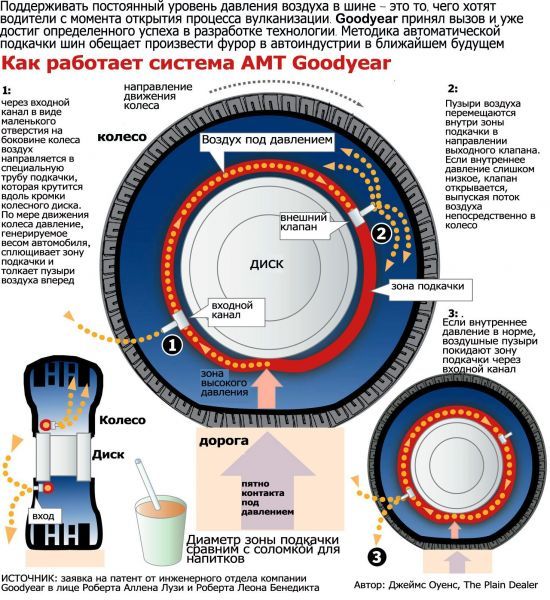Though they first appeared in the mid-1980s, run flat tires (RFT) are now more popular than ever. With some auto manufacturers making them standard in new vehicles, more consumers are asking about run flats, their advantages, and how using them impacts driving.
Run flat tires are tires on which you can continue driving after a puncture so you can take time get to an auto shop or find a safe, level area to change your tire.
You can’t drive on them indefinitely, though. Check the manufacturer’s specifications to find out how fast and how far you can drive on your run flat tires. Bridgestone run-flat tires will allow continued operation even after a loss of some or all inflation pressure for up to 50 miles (80 km) at a maximum speed up to 50 mph (80 km/h.)
There are two primary types of run flat tire systems: the self-supporting system and the support ring system.
In most self-supporting run flat tire systems, the tire features reinforced sidewall construction that will continue supporting the vehicle in the event of air loss. This construction allows continued operation after the loss of air pressure up to the speed and distance specified by the manufacturer.
Support ring run flat tire systems, on the other hand, employ a ring of hard rubber or another structure that can support the vehicle’s weight in an air loss condition.
Since they continue performing even though they’re “flat,” all run flat tires, regardless of the specific system type, may only be used on a vehicle equipped with a Tire Pressure Monitoring System (TPMS). The TPMS alerts you as soon as one of your tires loses pressure. Without it, you might not know you were driving on an underinflated tire.
You don’t have to change your tire in dangerous or uncomfortable conditions. This is perhaps the biggest benefit of run flat tires and is the one of the reasons why they were designed.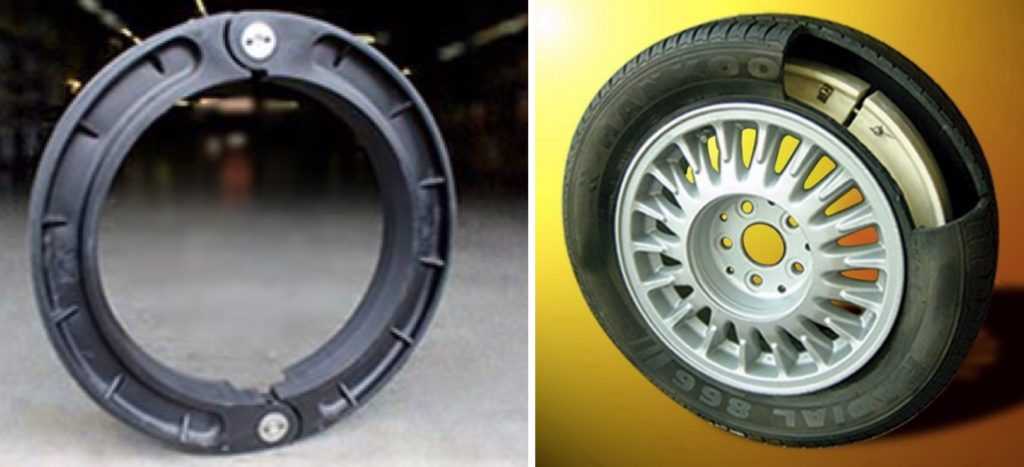 With conventional tires, you have to replace a flat on the spot or have your car towed.
With conventional tires, you have to replace a flat on the spot or have your car towed.
In a puncture situation, run flats are more stable than conventional tires. Since they’re made to support your vehicle even when they contain no air, run flat tires will help you maintain better control in a complete air loss situation than conventional tires.
As consumers continue rating safety high on the list of features they look for in a vehicle, the popularity of run flat tires is expected to grow. Since run flat tires work reliably with interconnected technologies like TPMS, it may only be a matter of time before they become the norm rather than the exception in new vehicles.
There’s never a good time for a flat. That’s why Bridgestone DriveGuard tires are masterfully engineered to keep you moving for up to 50 miles at speeds up to 50 MPH without disruption.
See Details Find Your Fit
There’s never a good time for a flat.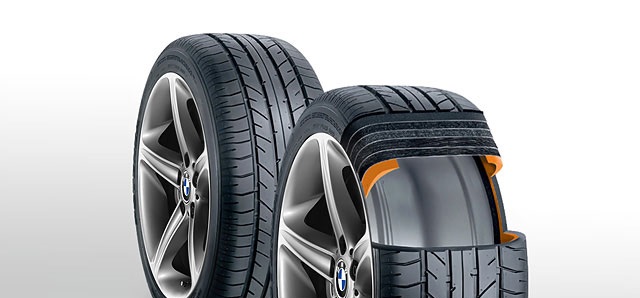 That’s why Bridgestone DriveGuard tires are masterfully engineered to keep you moving for up to 50 miles at speeds up to 50 MPH without disruption.
That’s why Bridgestone DriveGuard tires are masterfully engineered to keep you moving for up to 50 miles at speeds up to 50 MPH without disruption.
Home » Blog » Emergency Repairs » Run Flat Tyres: Everything You Need to Know
Have you been offered run flat tyres for your car and want to know the pros and cons? Maybe you’ve just heard of them and you’re interested to know more about how run flat tyres work, what maintenance they require, and if they’re actually worth the extra money you’ll pay for them. If so,check out our complete guide below.
Run flat tyres are designed to remain safe and functional for a limited time with no air pressure. That means, in the event of a puncture, you can continue driving for around fifty miles without having to change the tyre — which could be enough to get you home, or to a garage.
That means, in the event of a puncture, you can continue driving for around fifty miles without having to change the tyre — which could be enough to get you home, or to a garage.
Unlike conventional tyres, which require air to stay hard, run flat tyres have a reinforced sidewall, meaning they stay rigid without any air pressure.
The reinforced outer shell of run flat tyres keeps the rubber in place without air, supporting the car as you continue your journey. However, the sidewall isn’t designed to be permanent, and is only recommended for around 50 miles of additional driving after the tyre has deflated.
All cars that are compatible with run flat tyres have a tyre pressure monitoring system (TPMS), which is designed to alert the driver in the event of loss of air pressure. Without a TPMS system, it would be almost impossible to detect a puncture, given that run flat tyres will continue to work even when they’re deflated.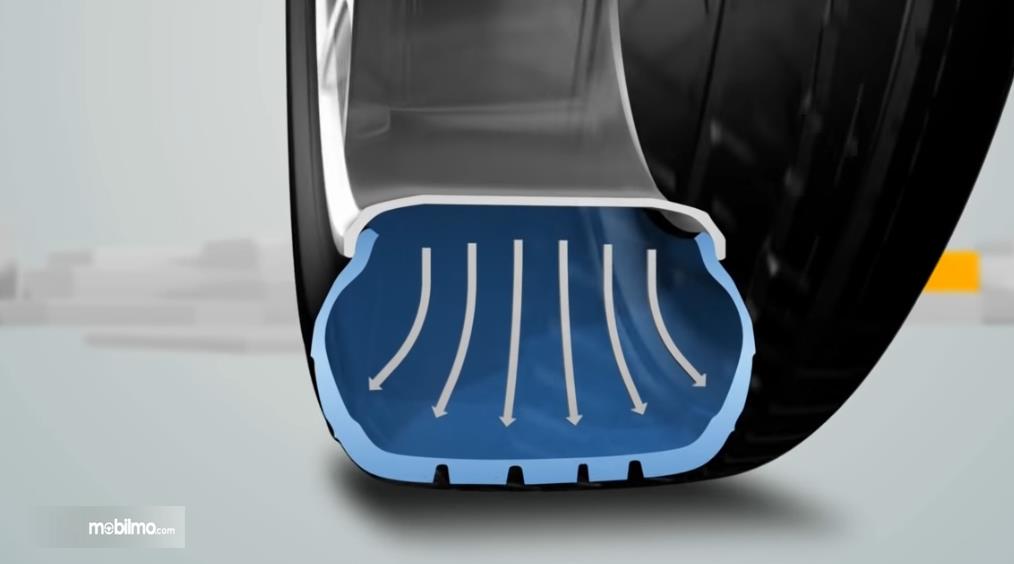
Most TPMS systems display an alert on the centre console, reminding the driver that they should stop driving after 50 miles and seek a tyre repair or replacement.
Generally, run flat tyres use the same rubber compounds as conventional tyres, so you can expect similar longevity. Despite their reinforced components, run flats will wear at the same rate as standard tyres, and require the same level of care and maintenance.
To keep your run flat tyres in good condition, check their pressure, depth and condition every fortnight. This will ensure you get maximum life out of your tyres before having to replace them.
Run flat tyres aren’t repairable. That’s because, once they’ve been driven on, they lose their structural integrity, making them unsuitable for puncture repair. If they are patched up, it’s highly likely they’ll puncture again down the line due to uneven wear and loss of rigidity.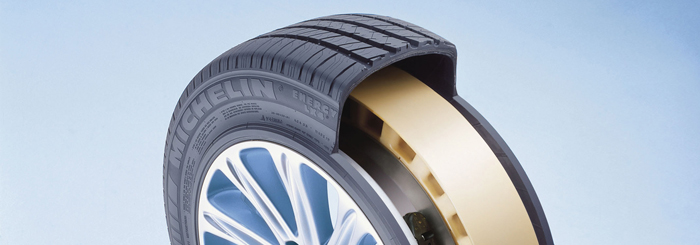
And that’s their biggest drawback compared to conventional tyres, which can often be repaired reasonably cheaply after a puncture (provided the hole isn’t in the sidewall). Given the expense of buying run flat tyres in the first place, each puncture could end up costing a small fortune.
In a word, yes. Because run flats aren’t widely available, they tend to be a lot more expensive than ordinary tyres and can only be fitted to certain cars — putting them beyond the price point of the average motorist. Couple that with the fact they can’t be repaired, and they won’t make a whole lot of sense for most drivers.
If you don’t fancy paying through the nose for a car with run flat tyres, Holts Tyreweld Emergency Puncture Tyre Repair offers the next best thing. In the event of a puncture, this innovative DIY product quickly seals and re-inflates your tyre — allowing you to get to a garage without having to mess around with a spare wheel.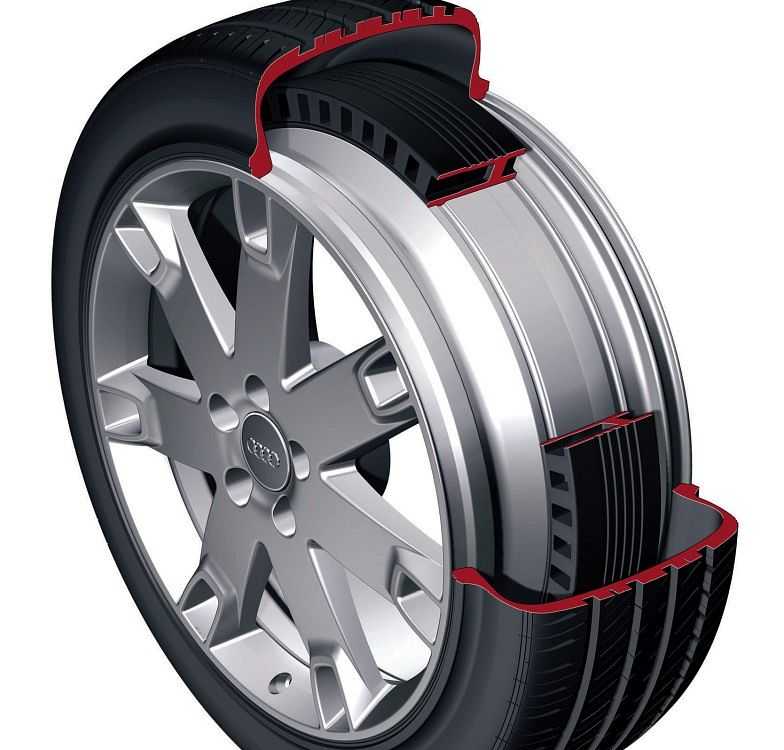
To find out more about our DIY car care range, visit our homepage.
Inexperienced motorists often make the same mistake - they ignore tire pressure. It happens that they drive a vehicle with flat tires for months, not even suspecting what problems this can lead to. At least the driver runs the risk of being left without a set of tires for the next year!
The danger is not only low tire pressure, but also excessively high. With the second option, the driver will immediately feel that the car has become quite stiff and jumps on every bump. It is a little more difficult to detect low pressure only if the tire is not completely flat. Even with 1.5 atmospheres in each tire, a beginner is unlikely to determine the problem on his own. nine0003
Note! Tire pressure should be checked daily, at least visually or by pressing fingers on the rubber bead. Of course, the best option would be a portable blood pressure monitor.
Of course, the best option would be a portable blood pressure monitor.
Low tire pressure threatens the driver with more serious problems, so it is important not to miss the moment! Let's take a look at these implications.
Perhaps we should start with the biggest risks that can come from low pressure. Loss of control is no joke! The vehicle may drift to the side when making a sudden maneuver if the pressure is below 1.0 atmospheres. nine0003
The main hazards when handling deteriorates:
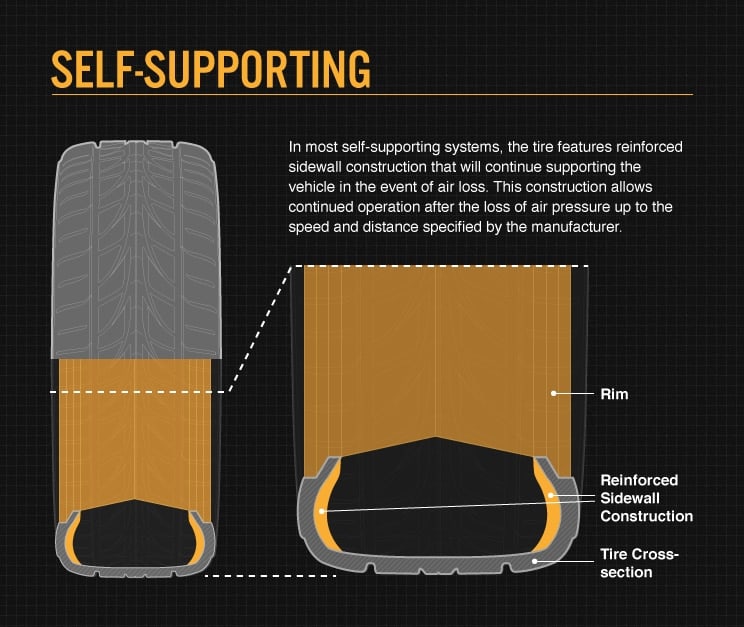 nine0028
nine0028 A less dangerous phenomenon is considered to be rapid wear, as well as critical deformation of rubber. The protector will "devour" literally before our eyes. If you do not notice the problem in time, you will have to buy new tires.
At low pressure, the tire will bulge from the sides and rub against the road surface. Moreover, the wear of such rubber is always uneven. The problem is aggravated by the fact that only one wheel can become unusable, and at least two will have to be changed! nine0003
In this case, the owner runs the risk of going for a new set of tires much earlier than the due date. Changing one wheel is also not an option, because the tread of the second will already have some wear. Therefore, the motorist immediately gets at least two new wheels.
In addition to dangerous situations and spending money on new tires, increased fuel consumption is added. The fact is that improper balancing and distribution of loads on the body affect the overall fuel consumption. It is more difficult for a car to accelerate, more energy and fuel mixture are expended. nine0003
Note! Experienced drivers pay attention to increased fuel consumption, which may indicate that it is time to check the tire pressure.
Flow rates can rise significantly, up to 30% of normal, so the pressure must always be monitored.
As a rule, each car has a sticker or plate on the door, which indicates the pressure ratings for different loads.
Important! Experienced drivers know that pressure can rise due to high temperatures in summer and decrease in winter. These are normal processes that occur every year.
If you do not know exactly what pressure should be in the tires of your car, you can use special tables for cars and trucks.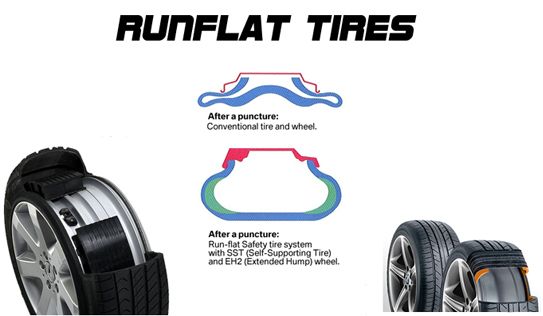 For example, consider the data presented in the table below:
For example, consider the data presented in the table below:
If you do not want to pay for new tires after a month of driving, try to always check the pressure. Money is not the last thing a motorist loses. The safety of passengers and drivers must come first! nine0003
Rate this article
0
Like this article? Share with friends:
1 What is RunFlat? nine0100 RunFlat is translated into Russian as “flat driving” or driving on a flat tire. Tire manufacturers use different technology designations (example: Goodyear RunOnFlat, Bridgestone RFT, Michelin ZP, Continental SSR, Pirelli Run Flat, Dunlop RunOnFlat, Nokian Flat Run, Yokohama ZPS, Kumho XRP).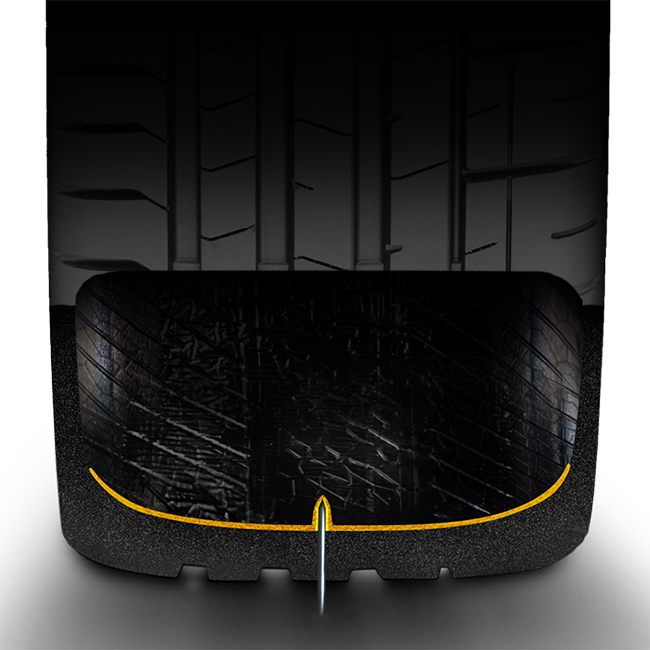
2 What are RSC tires?
RunFlat System Component is a single designation for all RunFlat tires installed on BMW vehicles.
3 What is the difference between Run Flat tires and regular tires?
4 How RunFlat Tires Work?
RunFlat technology is based on the concept of reinforced tire sidewalls. When a conventional tire deflates, it simply sags under the weight of the car, the beads move away from the rim and the sidewalls flatten onto the road. The weight completely destroys the tire in a few kilometers. Reinforced sidewalls of RunFlat tires keep the tire on the rim and successfully support the weight of the car after a puncture and complete loss of pressure. At the same time, all dynamic vehicle security systems such as ABS, ESP, DSC, CBC, etc. remain active. nine0003
5 How many kilometers and at what speed can you drive after a puncture?
The maximum run-flat distance depends on the tire manufacturer and operating conditions (50-150 km) The maximum vehicle speed is 80 km/h.
6 What are the differences in RunFlat technology between tire manufacturers?
7 Are there conditions for the use of Run Flat tires?
Without a tire pressure monitoring system installed, the operation of RunFlat tires becomes extremely dangerous, because the driver may not feel the loss of pressure in the tire and continue to move without speed limits, making sharp turns and maneuvers.